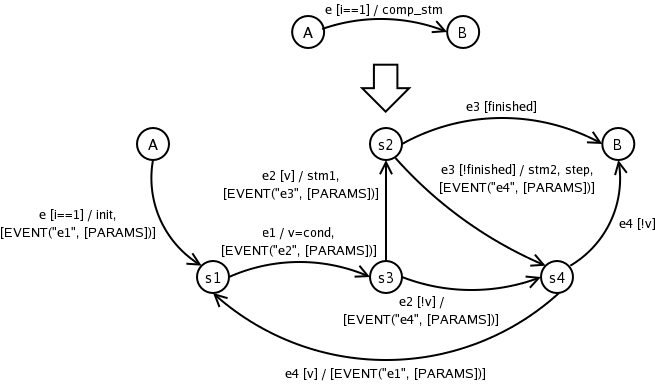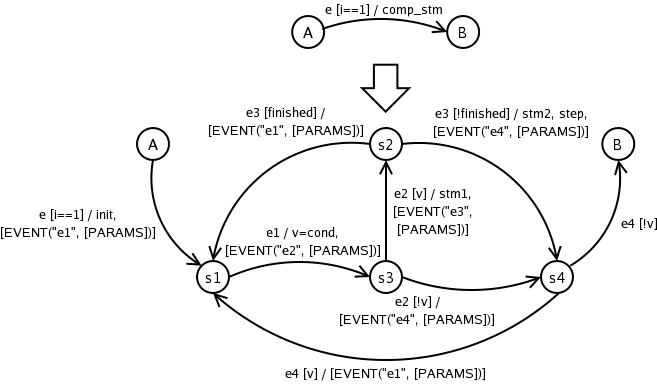




Next: 5.5.6 Tricks of Actions
Up: 5.5 Mapping from Programming
Previous: 5.5.4 Loops
Contents
Index
The break statement and the continue statement in a loop
can be transformed into extra transitions.
Suppose statement comp_stm is such a compound statement:
 ;
;
loop_label:
if ( ) {
) {
 ;
;
if (finished)
break;
 ;
;
 ;
;
goto loop_label;
}
The break statement stops the for-loop by changing the execution
point out of the compound statement. It is equivalent to:
 ;
;
loop_label1:
 =
=  ; // evaluate
; // evaluate  and store the result in
and store the result in 
if ( ) {
) {
 ;
;
if (finished)
goto loop_label2;
 ;
;
 ;
;
}
if ( )
)
goto loop_label1;
loop_label2:
Figure 5.6:
An example of the transformation from a break
statement into DCharts transitions
|
|
The transformation of the model is illustrated in Figure
5.6. The break statement in the for-loop is
eliminated in this example.
The continue statement in a loop can be eliminated in a similar
way. If the break statement in the above comp_stm is
replaced by the continue statement, it is equivalent to:
 ;
;
loop_label:
 =
=  ; // evaluate
; // evaluate  and store the result in
and store the result in 
if ( ) {
) {
 ;
;
if (finished)
goto loop_label;
 ;
;
 ;
;
}
if ( )
)
goto loop_label;
Figure 5.7:
An example of the transformation from a continue
statement into DCharts transitions
|
|
The transformation of this code with the continue statement is
shown in Figure 5.7.





Next: 5.5.6 Tricks of Actions
Up: 5.5 Mapping from Programming
Previous: 5.5.4 Loops
Contents
Index
Thomas Huining Feng
2004-04-28

